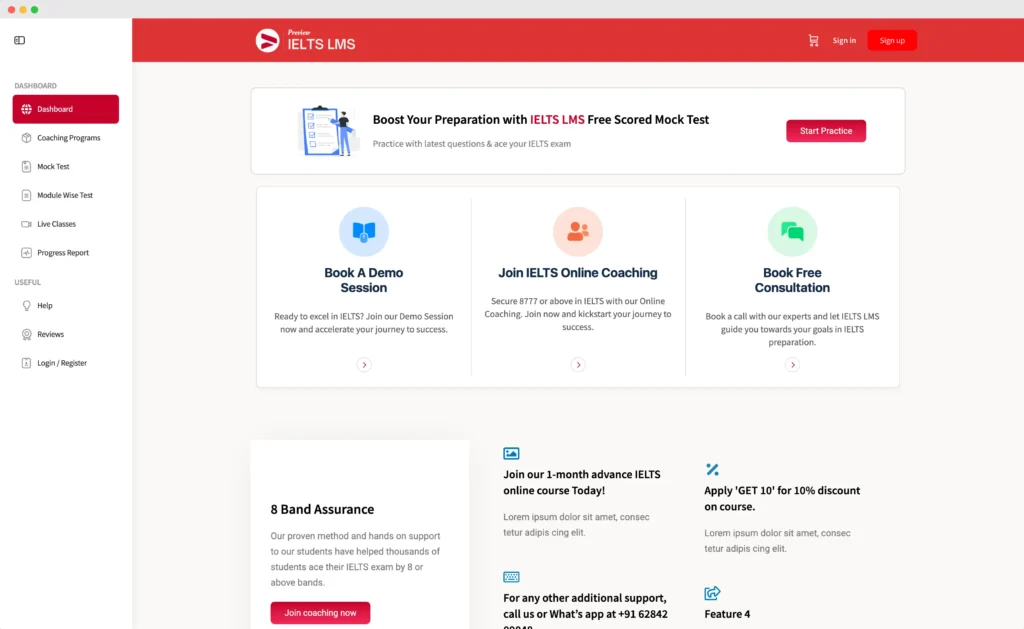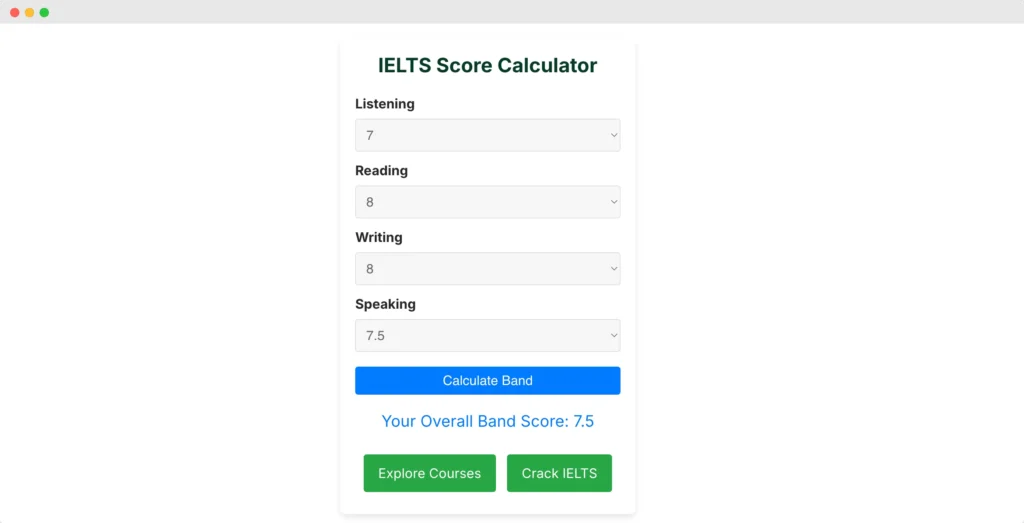Table of Contents
WordPress course websites are becoming increasingly popular as more and more people seek to learn and acquire new skills online. However, despite the growing demand for these courses, many website owners struggle to rank their WordPress course websites high on Google search results. This lack of visibility can severely limit their reach and potential student base.
The key to overcoming this challenge lies in effectively optimizing your website using the powerful Rank Math SEO plugin. With its user-friendly interface and robust features, Rank Math SEO is a valuable tool that can significantly improve your website’s search engine rankings.
By following a step-by-step guide, you can ensure that your WordPress course website stands out from the competition and secures the coveted No. 1 rank on Google. The first step is to install and activate the Rank Math SEO plugin on your WordPress website. This straightforward process involves navigating to the plugins section of your WordPress dashboard, searching for “Rank Math SEO,” and clicking on the “Install Now” button.
Once activated, you will need to configure the basic settings of the plugin. This includes connecting it to Google Search Console, which allows you to monitor your website’s performance and identify areas for improvement. By integrating Rank Math SEO with Google Search Console, you gain valuable insights into how your website is performing in terms of organic search traffic.
With Rank Math SEO properly set up, it’s time to delve into keyword research. This crucial step involves identifying relevant keywords that align with your course content and target audience’s search intent. By understanding what keywords potential students are using when searching for courses like yours, you can tailor your content accordingly and increase its visibility on search engine results pages.
Installing and Activating Rank Math SEO
To begin optimizing your WordPress course website for better search engine rankings, the first step is to install and activate the Rank Math SEO plugin. This powerful tool will help you improve your website’s visibility on Google and attract more organic traffic.
Installing Rank Math SEO is a straightforward process. First, log in to your WordPress dashboard and navigate to the “Plugins” section. Click on “Add New” and then search for “Rank Math SEO” in the search bar. Once you find the plugin, click on “Install Now” and wait for the installation process to complete.
After installing Rank Math SEO, you can activate it by clicking on the “Activate” button that appears after installation. Once activated, you’ll be directed to a setup wizard that will guide you through the initial configuration of the plugin.
During the setup process, you’ll need to connect Rank Math SEO to your Google Search Console account. This connection allows Rank Math to gather valuable data about your website’s performance and helps optimize it accordingly. Simply follow the prompts in the setup wizard to connect your Google Search Console account.
Once connected, you can start customizing the basic settings of Rank Math SEO according to your preferences. These settings include options for titles and meta descriptions, sitemaps, social media integration, and more. Take some time to familiarize yourself with these settings and make any necessary adjustments based on your specific requirements.
By installing and activating Rank Math SEO on your WordPress course website, you’re taking a crucial step towards improving its visibility on Google. The plugin provides powerful features that will help optimize your website’s content, structure, and overall performance. In the next section of this guide, we’ll explore how to configure Rank Math SEO settings for optimal results.
Configuring Rank Math SEO Settings
To optimize your WordPress course website for better search engine rankings, it is essential to configure the settings of the Rank Math SEO plugin. This comprehensive guide will walk you through the process and help you unlock the secrets to achieving a No. 1 rank on Google.
Once you have installed and activated the Rank Math SEO plugin on your WordPress website, it’s time to dive into configuring its settings. The plugin provides a user-friendly interface that makes it easy to navigate through various options.
Firstly, you need to connect Rank Math SEO to Google Search Console. This integration allows you to access valuable data about your website’s performance directly from Google. To do this, simply navigate to the “General Settings” tab in the Rank Math dashboard and click on the “Google Search Console” option.
Next, you will be prompted to authenticate your website with Google Search Console by clicking on the “Authenticate” button. Follow the instructions provided by Rank Math SEO to complete this process successfully. Once authenticated, your website’s data will be synchronized with Google Search Console, enabling you to monitor its performance accurately.
In addition to connecting with Google Search Console, make sure to explore other important settings within Rank Math SEO. These include configuring titles and meta tags for different types of content, setting up XML sitemaps for search engine crawling, optimizing breadcrumbs for enhanced navigation, and managing social media metadata.
By customizing these settings according to your specific requirements, you can ensure that your WordPress course website is fully optimized for search engines like Google. It’s important to note that while Rank Math SEO offers default settings that work well for most websites out of the box, tweaking these settings based on your unique needs can further boost your chances of ranking higher in search results.
Now that you have successfully configured Rank Math SEO settings and connected it with Google Search Console, it’s time to move on to the next step: performing keyword research. Stay tuned as we explore how to identify relevant keywords for your WordPress course website and leverage them to improve your search engine rankings.
Performing Keyword Research
Performing keyword research is a crucial step in optimizing your course website for search engine rankings. By identifying relevant keywords, you can tailor your content to match the search intent of your target audience and increase your chances of ranking higher on Google.

To begin with, it is important to understand the significance of keyword research. Keywords are the phrases or terms that users type into search engines when looking for information or solutions. By incorporating these keywords into your website’s content, you can make it more visible to search engines and attract organic traffic.
To perform keyword research effectively, start by brainstorming a list of potential keywords that are relevant to your course website. Think about the topics covered in your courses and the language that your target audience would use when searching for such information.
Once you have a list of potential keywords, you can use tools like Google Keyword Planner or SEMrush to analyze their search volume and competition level. Look for keywords with high search volume and low competition as they present better opportunities for ranking.
Another approach is to conduct competitor analysis. Identify websites that offer similar courses or target the same audience as yours and analyze the keywords they are targeting. This can give you valuable insights into popular keywords in your niche.
When choosing keywords, aim for a mix of long-tail and short-tail keywords. Long-tail keywords are longer phrases that are more specific and have less competition, while short-tail keywords are shorter and broader in scope. Incorporating both types of keywords will help you reach a wider audience while still targeting specific searches.
In addition to selecting relevant keywords, it is important to consider user intent when optimizing your content. User intent refers to the reason behind a user’s search query – whether they are looking for information, seeking answers, or looking to make a purchase. By aligning your content with user intent, you can provide valuable information that satisfies their needs and improves their overall experience on your website.
By following these steps and conducting thorough keyword research, you can optimize your course website to rank higher on Google. Remember to regularly review and update your keywords as trends and search patterns change over time. With a well-optimized website, you can increase your visibility and attract more organic traffic, ultimately leading to the success of your WordPress course website.
Optimizing Website Content
Optimizing the content on your website is crucial for improving its visibility and ranking on Google. By strategically incorporating relevant keywords into your page titles, meta descriptions, headings, and content, you can enhance your website’s search engine optimization (SEO) and attract more organic traffic. Here is a step-by-step guide to optimizing your website’s content using the identified keywords.

Firstly, it is important to include the identified keywords in your page titles. The page title is one of the most significant elements that search engines consider when determining the relevance of a webpage to a user’s query. By incorporating targeted keywords into your page titles, you can signal to search engines what your webpage is about and increase its chances of ranking higher in search results.
Next, optimize your meta descriptions by including the identified keywords. Meta descriptions provide a brief summary of the webpage’s content and are displayed below the page title in search results. By including relevant keywords in your meta descriptions, you can entice users to click on your webpage when it appears in search results.
In addition to page titles and meta descriptions, it is crucial to include the identified keywords within your headings and throughout the content of your webpages. This helps search engines understand the main topics covered on each webpage and improves their ability to match user queries with relevant content.
Furthermore, ensure that your website’s URLs are clean and SEO-friendly. Avoid using long strings of numbers or irrelevant characters in your URLs. Instead, use descriptive words or phrases that accurately reflect the content of each webpage. This not only makes it easier for users to remember and share your URLs but also helps search engines crawl and index them more effectively.
By following these optimization techniques for website content, you can improve its visibility on Google and increase its chances of ranking higher in search results. Remember that consistently creating high-quality and engaging content that provides value to your target audience is key to attracting organic traffic and achieving long-term success with your WordPress course website.
Improving Loading Speed
Improving loading speed is crucial for achieving better rankings on Google. Website loading speed is one of the key factors that search engines consider when determining the ranking of a website. A slow-loading website not only frustrates users but also negatively impacts their experience, leading to higher bounce rates and lower engagement.

To optimize your website’s loading speed, there are several steps you can take. First and foremost, it’s important to optimize your images. Large image files can significantly slow down your website’s loading time. Use image compression tools or plugins to reduce the file size without compromising on image quality. Additionally, consider lazy loading images, which means that images will only load as users scroll down the page.
Another effective way to improve loading speed is by using caching plugins. Caching involves storing static versions of your web pages so that they can be quickly served to users instead of generating them from scratch every time someone visits your site. Caching plugins like WP Rocket or W3 Total Cache can help in this regard.
Minimizing code is also essential for faster loading times. Remove unnecessary CSS and JavaScript files, as well as any unused code snippets or plugins that may be weighing down your website’s performance. Streamlining your code will make it easier for browsers to render your web pages quickly.
Creating High-Quality Content
Creating high-quality content is crucial for improving your website’s rankings on Google. When it comes to ranking your WordPress course website, the quality of your content plays a significant role in attracting and engaging your target audience. High-quality content not only helps you establish yourself as an expert in your field but also increases the likelihood of other websites linking back to your site, which is a key factor in improving search engine rankings.
To create valuable content for your target audience, start by understanding their needs and interests. Research popular topics and trends related to your course niche and identify gaps that you can fill with unique insights or perspectives. This will help you stand out from competitors and provide real value to your readers.
When crafting your content, make sure it is well-researched, accurate, and up-to-date. Use credible sources and cite them appropriately to establish authority and build trust with your audience. Incorporate relevant data, statistics, and case studies to support your claims and provide evidence for the information you share.
Additionally, consider the format of your content. Break up text with headings, subheadings, bullet points, and visuals such as images or infographics to make it more visually appealing and easier to digest. Use a conversational tone that resonates with your target audience while maintaining professionalism.
Another important aspect of creating high-quality content is optimizing it for search engines. Incorporate relevant keywords naturally throughout your content without overstuffing them. Focus on providing valuable information rather than solely targeting keywords.
Lastly, encourage engagement with your content by including calls-to-action (CTAs) that prompt readers to leave comments or share their thoughts on social media platforms. Respond promptly to comments and engage in discussions with your audience to foster a sense of community around your website.
By consistently creating high-quality content that provides value to your target audience, you can improve the visibility and rankings of your WordPress course website on Google. Remember to regularly analyze the performance of your content and make necessary adjustments to further enhance its effectiveness in attracting and engaging your audience.
Building Backlinks
Building backlinks is an essential strategy for improving the ranking of your WordPress course website on Google. By acquiring high-quality backlinks, you can enhance your website’s authority and credibility in the eyes of search engines. In this section, we will guide you on how to build effective backlinks that will boost your website’s visibility.

One effective method to build backlinks is through guest posting. Identify authoritative websites or blogs in your niche and offer to write valuable content as a guest author. By providing insightful and informative articles, you can establish yourself as an expert in your field and attract relevant traffic to your website. Additionally, including a link back to your website in the author bio or within the content itself will generate valuable backlinks.
Social media promotion is another powerful tool for building backlinks. Share your website’s content on various social media platforms such as Facebook, Twitter, LinkedIn, and Instagram. Engage with your audience by responding to comments and encouraging them to share your posts. This increased visibility will not only drive traffic but also encourage other website owners to link back to your content.
Collaborating with other relevant websites is also a fruitful approach for building backlinks. Seek out partnerships with complementary businesses or industry influencers who have established online presence. You can collaborate on joint projects, co-create content, or exchange guest posts, all of which can result in valuable backlinks.
Remember that quality is more important than quantity when it comes to building backlinks. Focus on acquiring links from reputable websites with high domain authority rather than spammy or low-quality sites. Regularly monitor the performance of these backlinks using Rank Math SEO plugin and make necessary adjustments if needed.
By implementing these strategies for building high-quality backlinks, you can significantly improve the ranking of your WordPress course website on Google search results pages.
Monitoring Website Performance
Monitoring your website’s performance is essential for ensuring its success in the search engine rankings. By regularly tracking and analyzing the performance of your website, you can identify areas for improvement and make necessary adjustments to boost its visibility on Google.
One effective tool for monitoring website performance is the Rank Math SEO plugin. This powerful plugin offers a range of features that allow you to track key metrics and gain valuable insights into your website’s performance. With Rank Math SEO, you can easily monitor important factors such as organic traffic, keyword rankings, click-through rates, and more.
By connecting Rank Math SEO to your Google Search Console account, you can access even more detailed data about your website’s performance. This integration provides you with valuable information about the keywords that are driving traffic to your site, the number of impressions your pages are receiving, and the average position of your site in search results.
Once you have gathered this data from Rank Math SEO and Google Search Console, it’s time to analyze it and identify areas for improvement. Look for patterns or trends in the data that could indicate potential issues or opportunities. For example, if you notice a decline in organic traffic for certain keywords, it may be a sign that you need to optimize those pages further.
Based on the insights gained from monitoring your website’s performance, you can make necessary adjustments to improve its rankings on Google. This could involve optimizing underperforming pages by adding relevant keywords or improving their meta descriptions. It could also mean updating outdated content or implementing technical optimizations to enhance loading speed.
Conclusion
In conclusion, achieving a top ranking on Google for your courses website is no easy feat, but with the right strategies and tools, it is definitely possible. By following the step-by-step guide outlined in this blog post, you can optimize your WordPress course website using the Rank Math SEO plugin and increase its visibility and reach.
Installing and activating Rank Math SEO is the first crucial step in this process. This powerful and user-friendly tool provides you with the necessary features to improve your website’s search engine rankings. Once installed, you can configure the basic settings of the plugin, including connecting it to Google Search Console.
Performing keyword research is essential for identifying relevant keywords that will help boost your website’s visibility. By optimizing your website’s content with these keywords in page titles, meta descriptions, headings, and throughout the content itself, you can increase its chances of ranking higher on Google.
In addition to keyword optimization, it is important to ensure that your website’s URLs are clean and SEO-friendly. This means removing any unnecessary characters or numbers from your URLs and using descriptive words instead.
Improving your website’s loading speed is another crucial factor in achieving a high ranking on Google. Optimizing images, using caching plugins, and minimizing code are all effective ways to enhance loading speed and provide a better user experience.
Creating high-quality and engaging content that provides value to your target audience is key to attracting organic traffic and increasing your website’s authority. By consistently producing informative articles or videos related to your courses, you can establish yourself as an expert in your field.
Building backlinks from reputable websites through guest posting, social media promotion, and collaborations with other relevant websites will further enhance your website’s credibility in the eyes of Google. These backlinks act as votes of confidence for your content.
Lastly, regularly monitoring your website’s performance using the Rank Math SEO plugin will allow you to make necessary adjustments to improve its ranking on Google. Analyzing data such as organic traffic, bounce rate, and click-through rate will provide valuable insights into the effectiveness of your optimization efforts.
In conclusion, by following these steps and utilizing the Rank Math SEO plugin, you can dominate Google rankings for your courses website. Unlock the secrets to achieving a No. 1 rank on Google and outshine your competitors in the ever-growing online education market.






